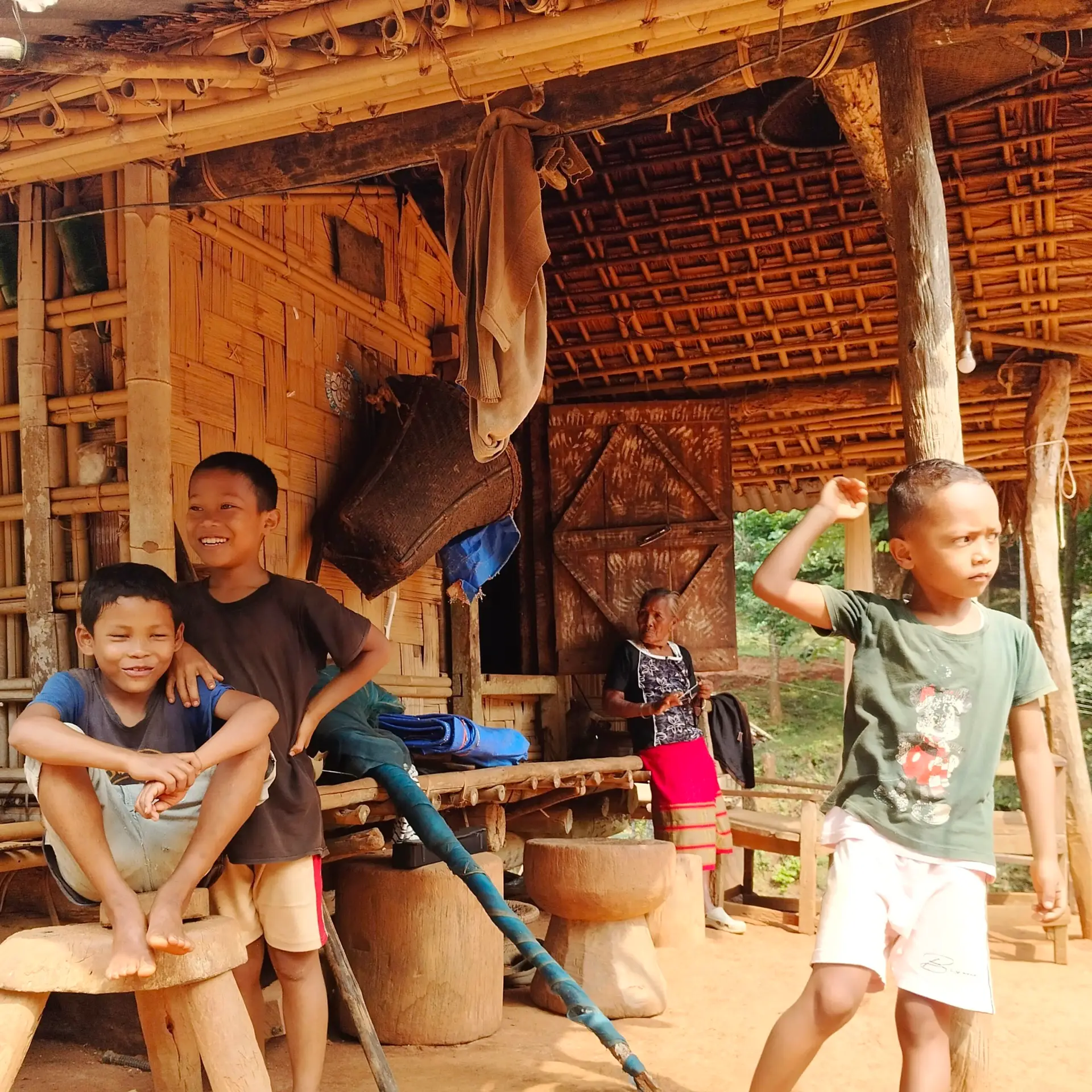Recently, I had an opportunity to celebrate a traditional festival of Meghalaya, i.e., Wangala, which is locally called “A Hundred Drum Festival”. This is celebrated as a harvest festival by the Garo tribe to express gratitude to the Sun god (Misi Saljong) for blessing the bumper harvest. This festival is celebrated in the months from September to December, with different villages on different dates. In the village of Sadolpara, this festival was held during India’s big festival, Diwali. The Garos, who follow the Songsarek way of life, honor their deity with offerings and traditional dances at the Nokma’s (village headman’s) house. Songsarek traditions, closely tied to shifting (Jhum) cultivation, are increasingly threatened by modern influences, commercial farming, and the loss of Indigenous knowledge.
Key Features of Wangala:
-
- Cultural identity: It symbolizes the thanksgiving rituals of the Garo people towards nature and their Sun God, Misi Saljong for his blessing of the bountiful harvest.
- Post-harvest festival: This festival is celebrated after harvesting of crops by offering rice beer.
- Drumming: The festival gets its name from the synchronization of hundreds of drums, known as ‘Dama’, played at the chorus.
- Wangala Dance: Men and women dressed in traditional attire perform the lively Wangala dance, narrating stories of daily life and mythological stories. At the end of the festival, the largest group of dancers gather on the main celebration area with many drums and perform ceremonial and traditional dances.
- Eye-catching traditional attire: women wear the bead-embellished chroko ganna, the ganna dakmanda (wrap), the chinani (shawl), ganna kore kinga (traditional top), and the kotip (a headscarf-like accessory). The men are dressed in the gantap (wrap), the genji gisim (shirt) or they can also replace that with a pandra (a crisscrossed cloth worn across the body), and kadesil is the distinctive headgear. Coral, shells, beads, and silver dominate the many ornaments worn by the men and the women.
- Rituals: The festival begins with ‘Rugala’, where offerings of rice beer and cooked rice are made to Misi Saljong, followed by ‘Sa·sat So·a’, the sacrifice of a rooster.
Why is Wangala diminishing?
Several factors contribute to the decline of the Wangala festival:
- Urbanization and Modernization: Youths are increasingly moving to cities for education and jobs, leading to a disconnect from their cultural roots. Modern lifestyles and globalization influence overshadow traditional practices.
- Loss of Indigenous Knowledge: The Garo oral tradition is at risk due to the lack of interest shown by the younger generation. Only a few elders who hold cultural and ritual knowledge are left to carry forward traditions.
- Religious and Cultural Changes: The spread of other religions in Meghalaya has led to a decline in animistic and traditional practices. Some Garos see celebrating Wangala as inconsistent with their religious beliefs.
- Economic Challenges: Organizing the festival requires monetary resources, which can be challenging for communities facing financial constraints.
- Environmental Pressures: Deforestation, settled agriculture, and modern agricultural practices have impacted the resources required for rituals, such as wood for making drums.
Revitalization efforts:
Despite the above challenges, efforts are underway to revive and sustain the Wangala festival:
-
- Government Support: The Meghalaya government promotes Wangala as a tourism event, encouraging visitors to experience Garo culture, music, dance, and traditional cuisines.
-
- Community Initiatives: Local groups and cultural organizations are working to document and teach the younger generation about the festival’s significance.
-
- Cultural Tourism: Showcasing Wangala as part of Meghalaya’s heritage attracts attention and resources to preserve it.
Preserving Wangala is vital not just for cultural identity but also for fostering pride among the Garo people and educating the world about Meghalaya’s rich traditions. To preserve these traditions, it is essential to document traditional practices, integrate them into educational curricula, and foster cultural pride among younger generations.
Further reading: https://whereagroforestrymeetsagriculture.com/bhagoria-bihu-onam-pongal-wangala-and-beyond-indias-harvest-festivals-to-tribute-the-sun-crops-and-trees-2/
Conclusion
The Wangala Festival, known as the “100 Drums Festival,”, a vibrant harvest celebration of Meghalaya’s Garo tribe, symbolizes gratitude to the deity Misi Saljong for a bountiful harvest. It holds cultural significance by showcasing traditional music, dances, and indigenous cuisines. However, modern influences, urbanization, deforestation, religious and cultural changes, and diminishing interest among the younger generations pose threats to its continuity. Efforts to preserve this tradition are crucial to maintain its cultural significance and identity. Community-driven initiatives, increased awareness, and government support can ensure its survival. Revitalizing Wangala is not just about preserving a festival but safeguarding the Garo tribe’s cultural roots and passing them on to future generations.
Trending blog: https://whereagroforestrymeetsagriculture.com/best-host-for-successful-black-pepper-and-betel-vine-cultivation/

